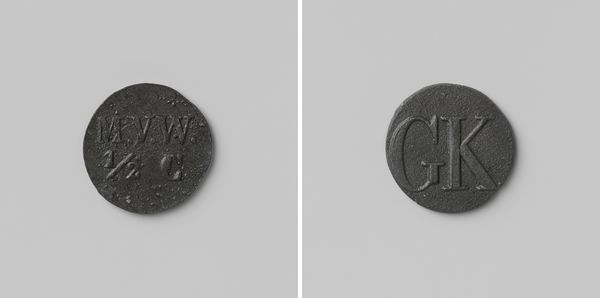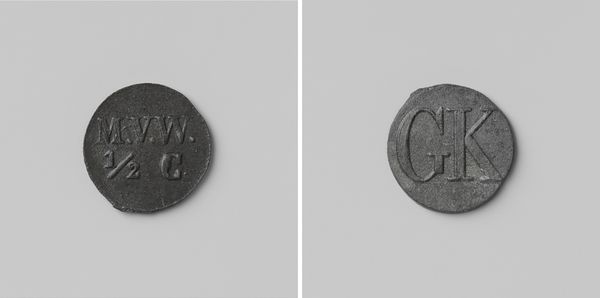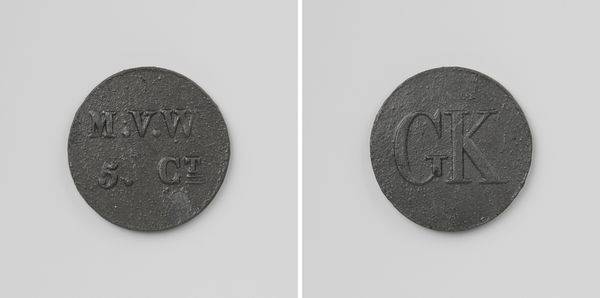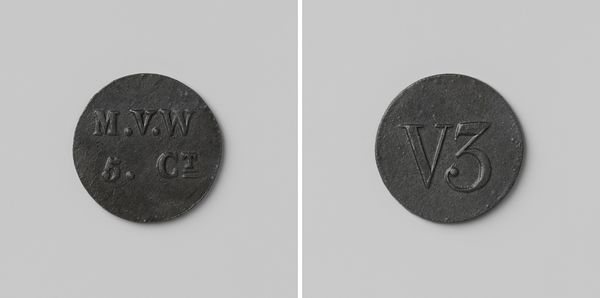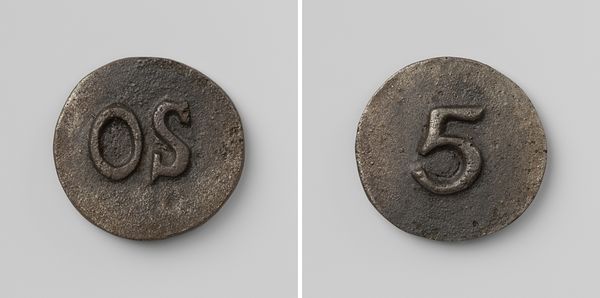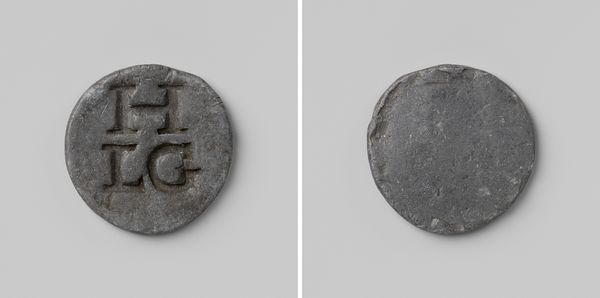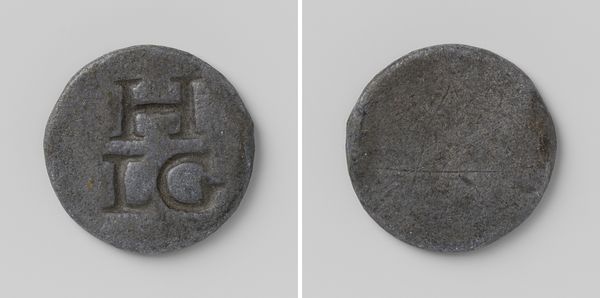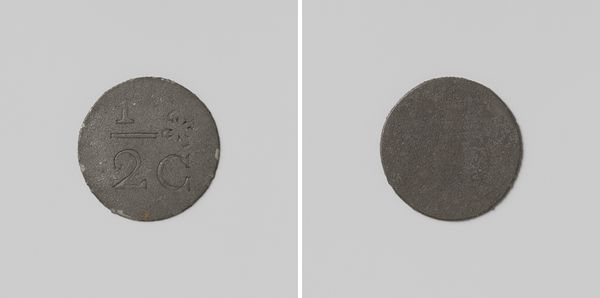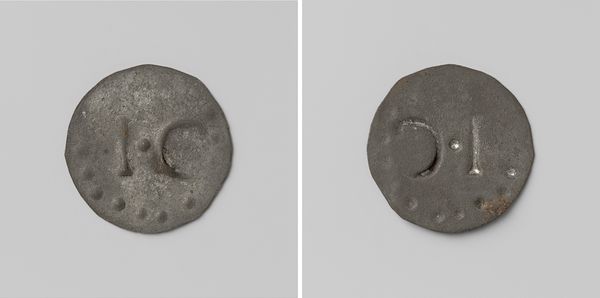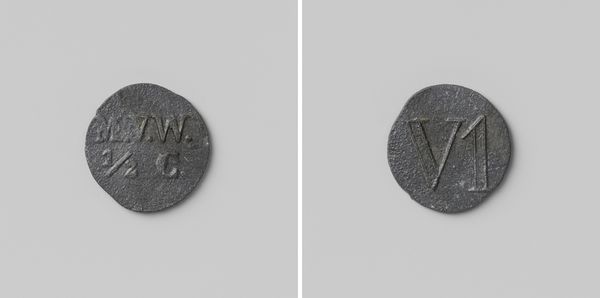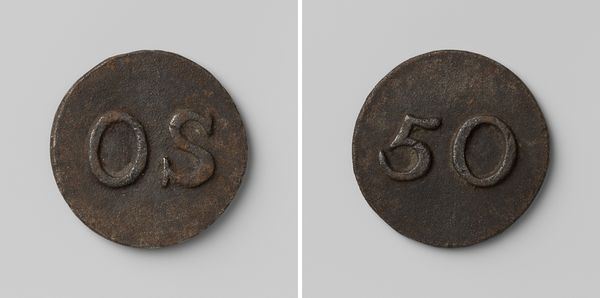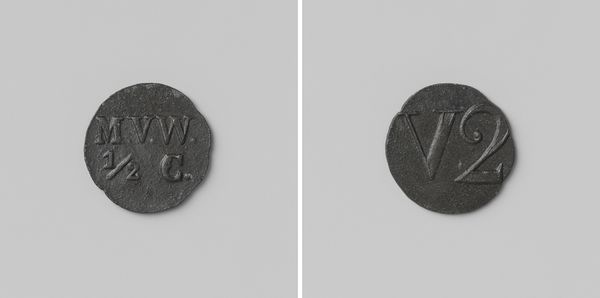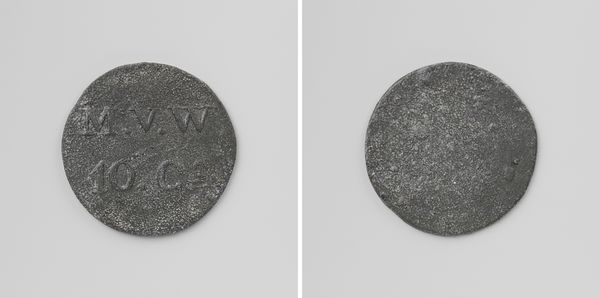
Strafgevangenis Ommerschans, huismunt geslagen op last van de Maatschappij van Weldadigheid ter waarde van tweeeneenhalve cent 1818 - 1859
0:00
0:00
print, metal, sculpture
# print
#
metal
#
sculpture
#
folk-art
#
sculpture
Dimensions: height 3 cm, width 3.8 cm, weight 135 gr
Copyright: Rijks Museum: Open Domain
Curator: Looking at this piece, the first word that comes to mind is “bleak.” It’s so minimal, and that gray metal seems to absorb all the light. There’s a story here, and I can't help but wonder what that is, and if this small token has larger meanings. Editor: The “Strafgevangenis Ommerschans, huismunt geslagen op last van de Maatschappij van Weldadigheid ter waarde van tweeeneenhalve cent” – which translates roughly to, ‘Ommerschans Prison, house coin minted at the request of the Society of Welfare worth two and a half cents’ – is indeed a stark reminder of social control and poverty. It’s fascinating that this token, dating between 1818 and 1859, served as currency within a Dutch penal colony. Curator: A prison coin…that contextualizes so much. The weight of it feels heavy now, beyond just the material. Was it really only worth two and a half cents, even at the time? Who determined that worth? Editor: Its value wasn't much in terms of formal currency, but it held the value for workers inside, acting as a labor voucher, allowing them to purchase basic necessities inside of Ommerschans. Curator: Right, a closed circuit of economy. It really makes you consider how these systems of forced or unfairly compensated labor become self-perpetuating. Editor: Exactly. This isn't just about a little metal coin; it's a glimpse into the policies of a system designed for the management—and perhaps exploitation—of a specific demographic. It makes you consider ideas of labour precarity or social control by imprisonment, the ways it manifested then, and even how that might have affected contemporary society today. Curator: It's strange, isn't it, how such a small, seemingly insignificant object can unlock so much wider discourse about power, governance and capital. And its role in people's lives back then. Editor: Indeed. Studying objects like this makes us question not only the art world, or history itself, but allows a reflection on human relations beyond that specific moment in the past, hopefully leading to something brighter, or fairer, for everyone now and in the future.
Comments
No comments
Be the first to comment and join the conversation on the ultimate creative platform.
